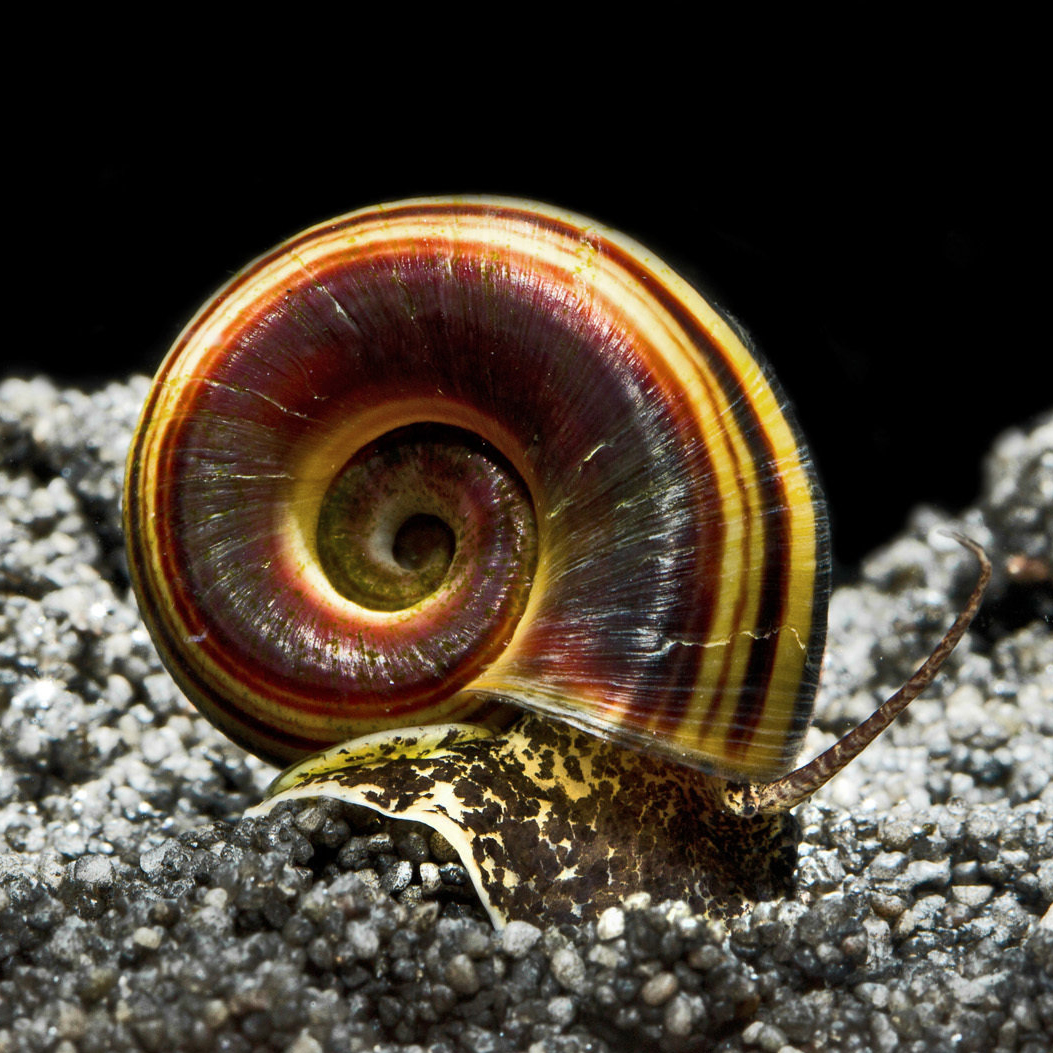Colombian Ramshorn Snail
Marisa cornuarietis
The Colombian Ramshorn Snail is a pretty aquarium snail that is particularly noticeable because of its striped shell.
- pretty freshwater snail
- variable colored housing
- good leftover eater
Out of stock
Receive in-stock notifications for this.
 Delivery in a few working days
Delivery in a few working days
 Free shipping from €60 across Austria
Free shipping from €60 across Austria





Important data
Product description & details
Marisa cornuarietis, also known as the (Giant) Colombian Ramshorn Snail or the Colombian Ramshorn Apple Snail, is a South and Central American freshwater snail, which is externally reminiscent of a ramshorn snail, but belongs to the apple snail family. The plate-shaped shell of the paradise snail can reach an impressive diameter of around 5cm and has a yellow base color with dark brown to black stripes. The snail’s foot color is cream and dark mottled. Due to its coloring and size, this snail is a wonderful sight in the aquarium. In contrast to apple snails of the genus Pomacea, Marisa cornuarietis is not affected by the EU ban and can continue to be kept and bred.
Care in the aquarium
The Colombian Ramshorn Snail is easy and uncomplicated to care for. Due to its size, the aquarium should hold at least 60 liters and be designed so that the snail cannot get stuck in any niches. As with most species of snails, medium to hard water is ideal, as the shell can be damaged if the water is too soft. The water should also have a temperature between 18 and 28°C. We also recommend covering the aquarium so that the snail cannot accidentally climb out of it. It should be noted that the Colombian Ramshorn Snail draws air through a sipho (“breathing tube”) on the surface of the water and therefore there must be a small distance between the water and the cover. However, this absolutely peaceful snail can easily be socialized with aquarium animals that do not chase it or pluck at it.
Feeding
As a classic recycler of leftovers, the Colombian Ramshorn Snail feeds on biofilm and algae growth as well as detritus (dead plant material, carrion, leftover food). The snail is not picky when it comes to feeding. Pretty much everything is eaten. Fish and shrimp food, as well as vegetables, are eagerly accepted. It can also be offered frozen food every now and then. It should be noted that the Colombian Ramshorn Snail also eats healthy, living plants and is not impressed by hard-leaved plants such as Anubias, which is why it is not suitable for aquariums in which the plants are the focus – e.g. aquascapes. Due to its size, the Colombian Ramshorn Snail also draws a lot of lime from the water, which is why we strongly recommend giving feed containing minerals.
Sexual characteristics and breeding
The Colombian Ramshorn Snail has separate sexes, although the sexes cannot always be clearly identified. The penis of the male is sometimes visible to the right of the head, but should not be confused with the sipho (“breathing tube”), which is on the left side of the head. This species of snail lays the 3-5mm eggs in a jelly packet under water on plants or other surfaces such as glass panes. The egg clutches can be easily removed if offspring is unwanted. Otherwise, the reproduction of the paradise snail is extremely easy and occurs without any further human intervention.





